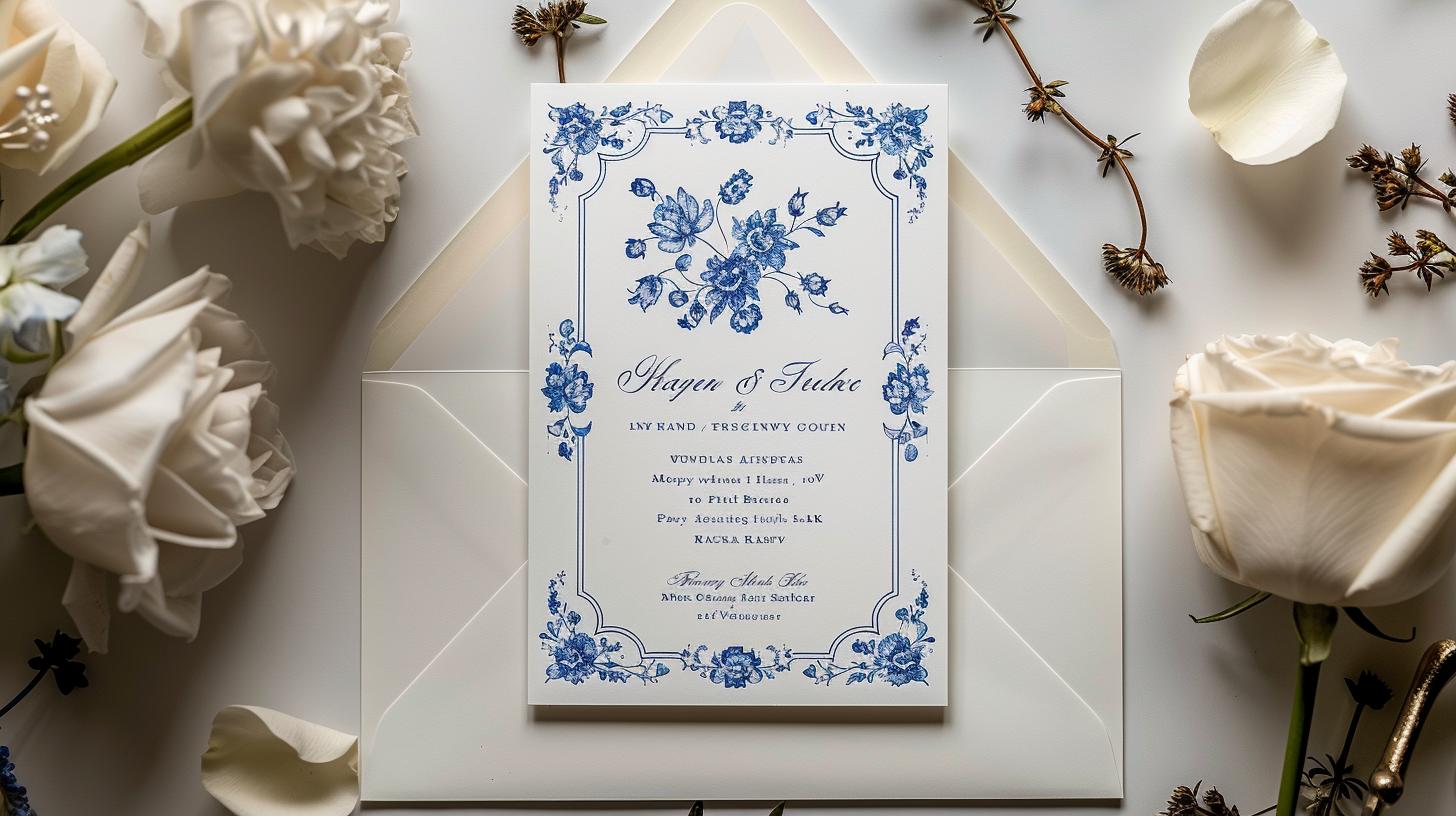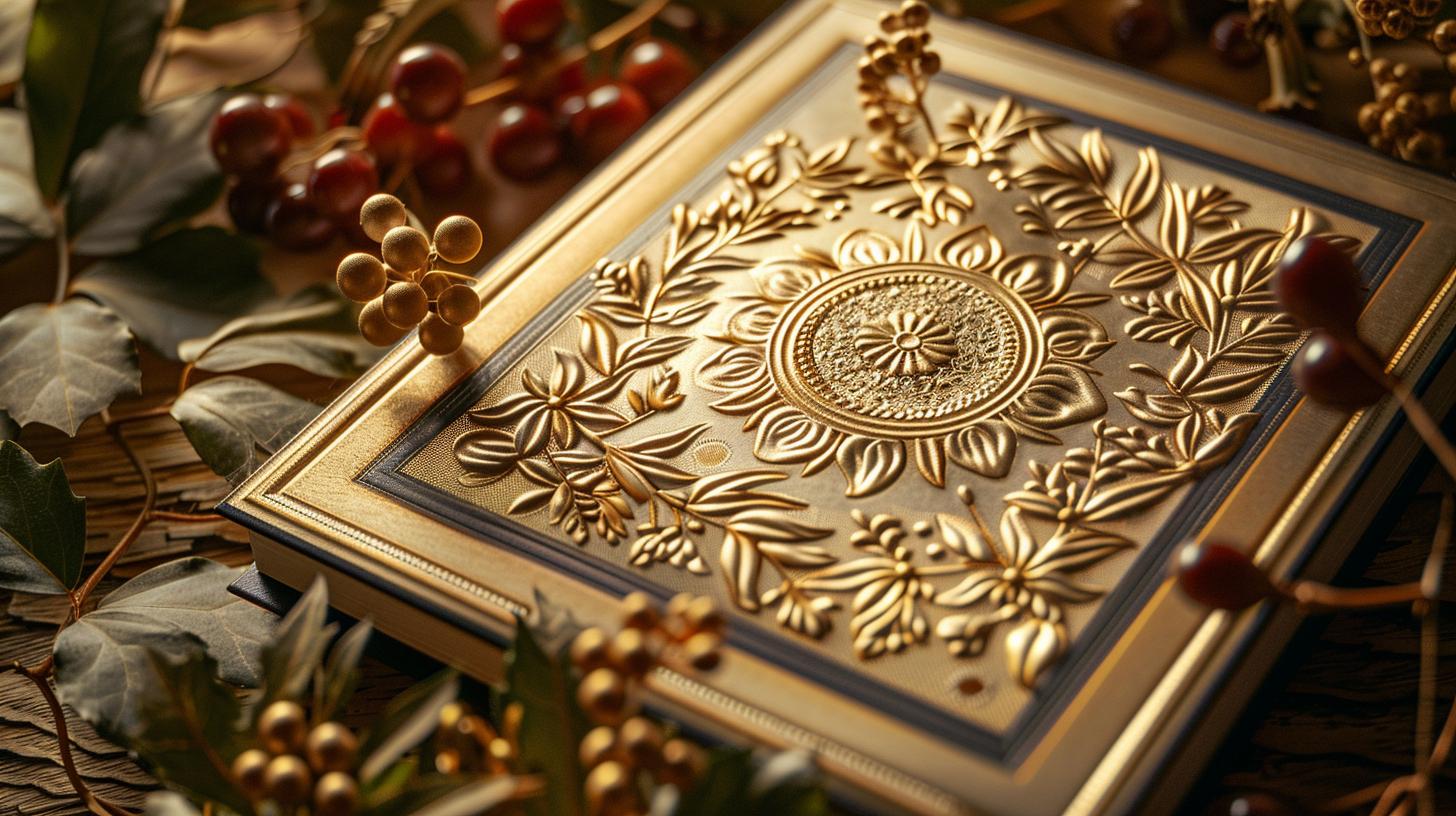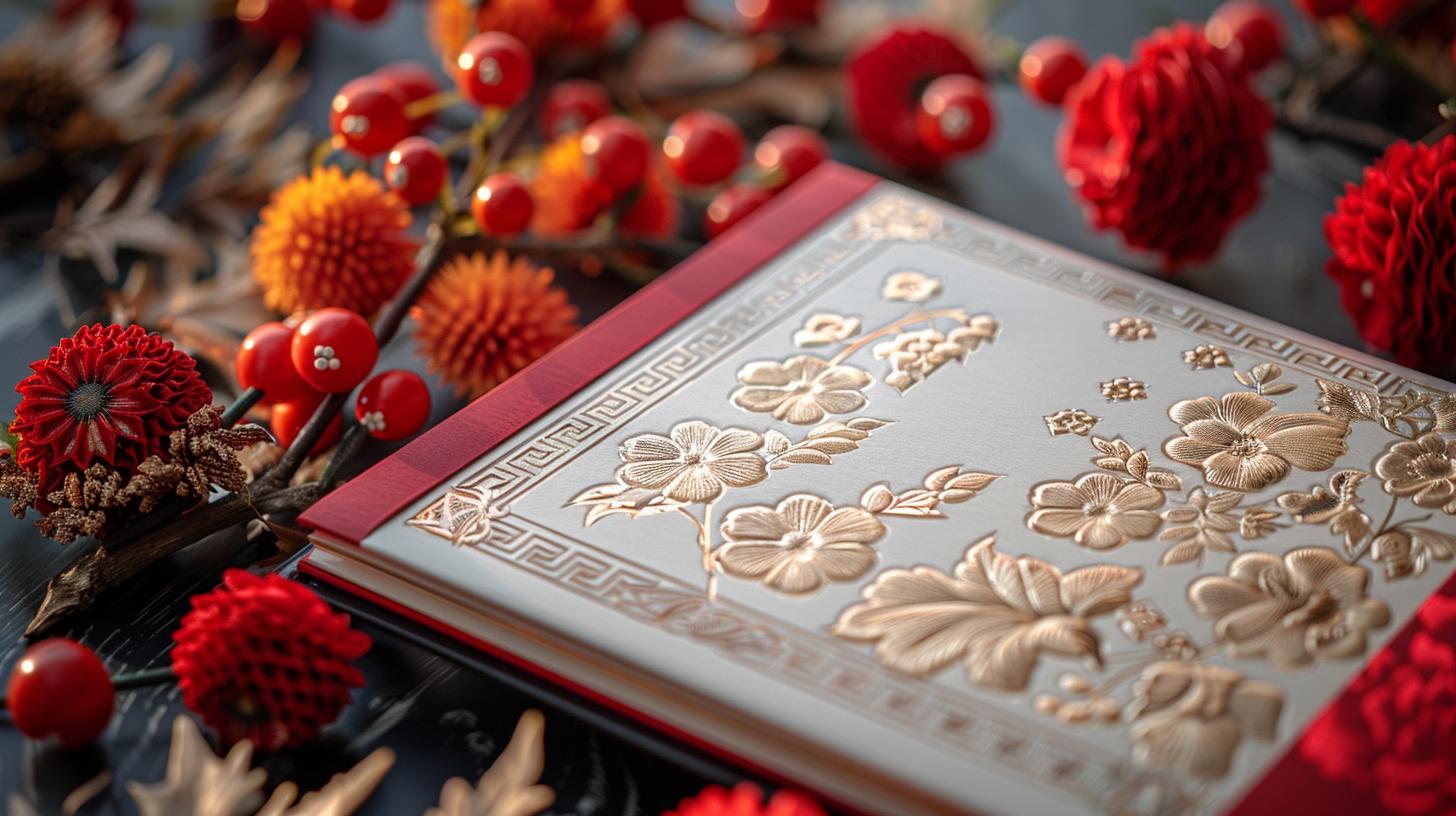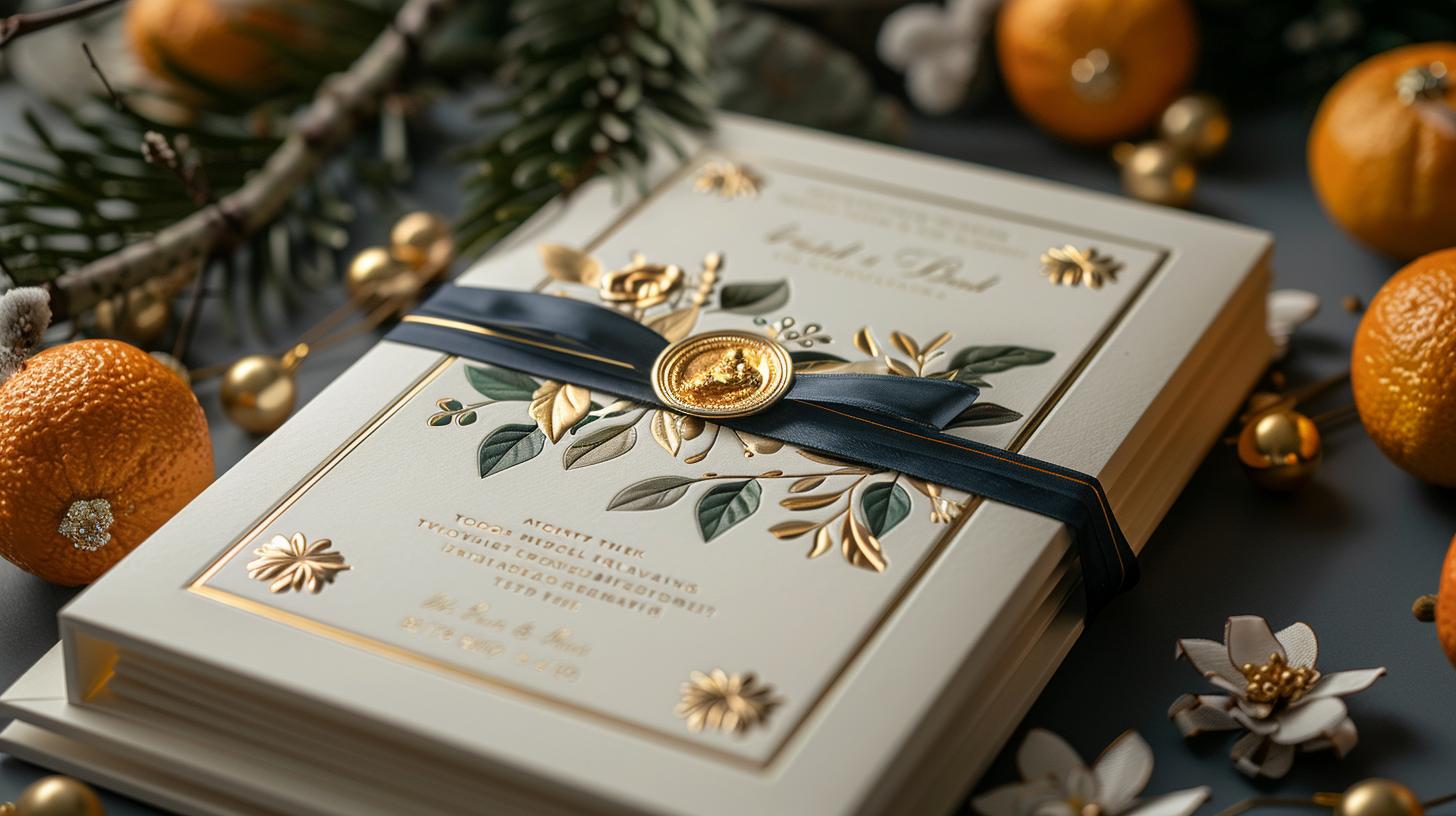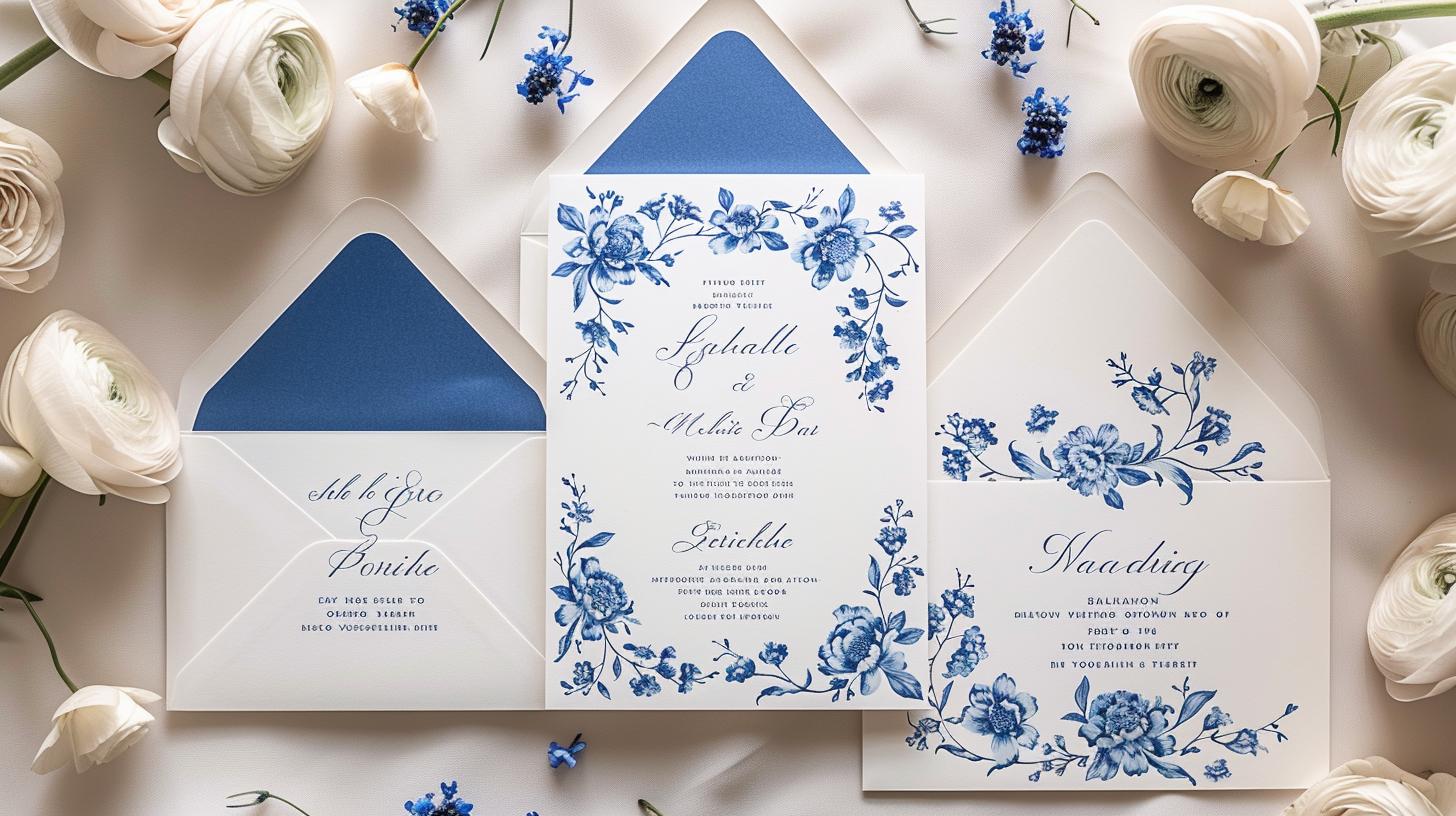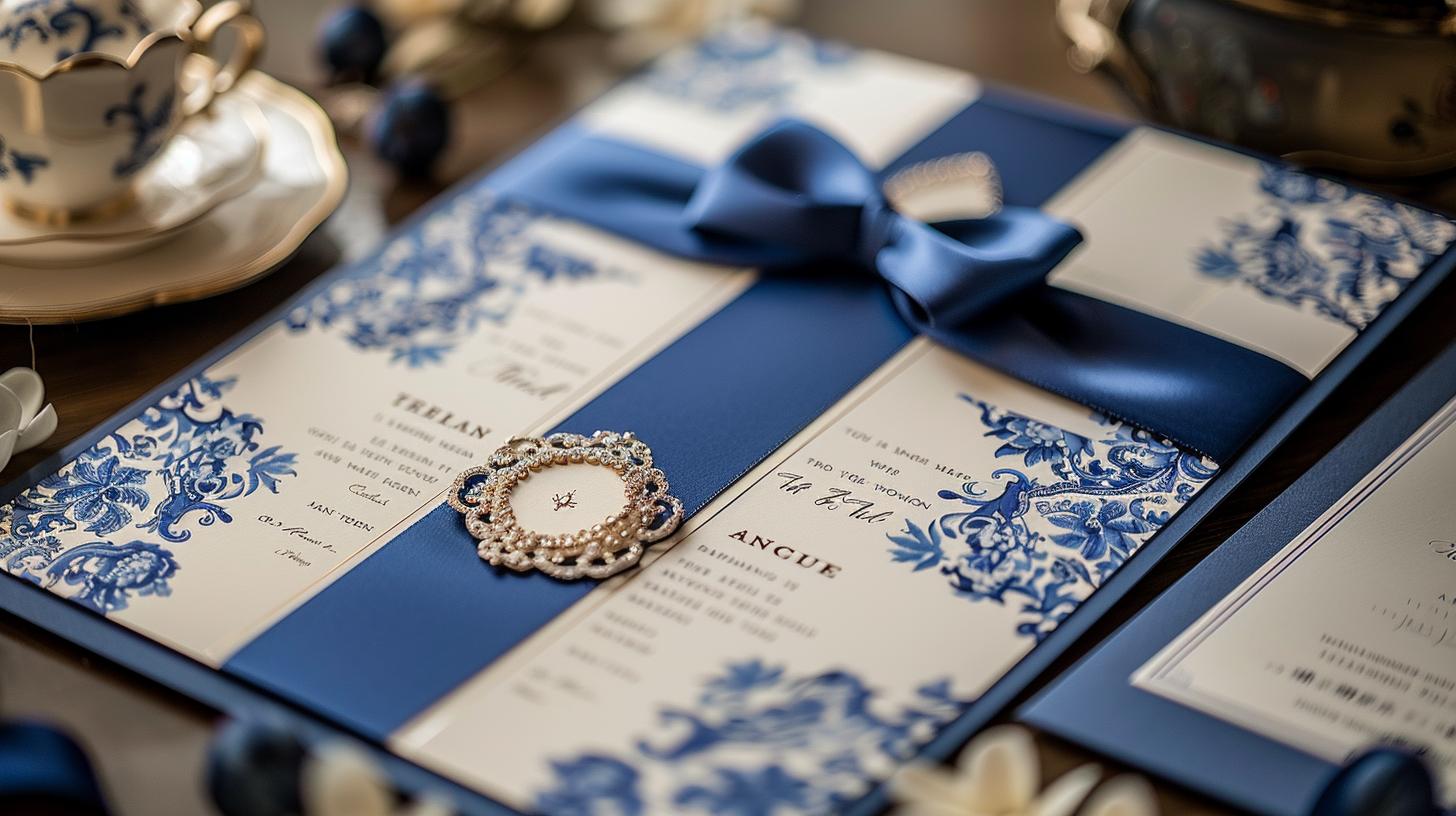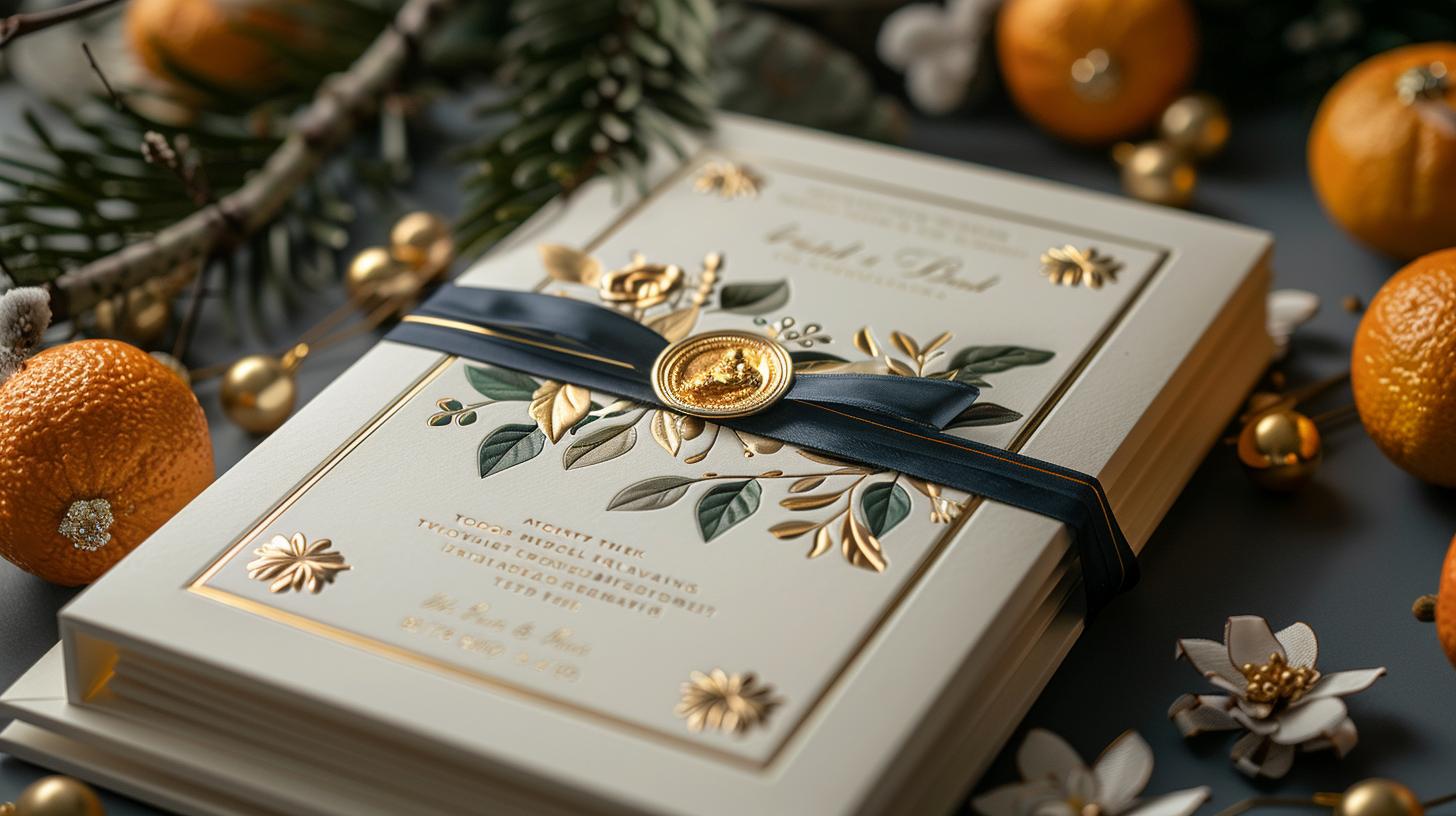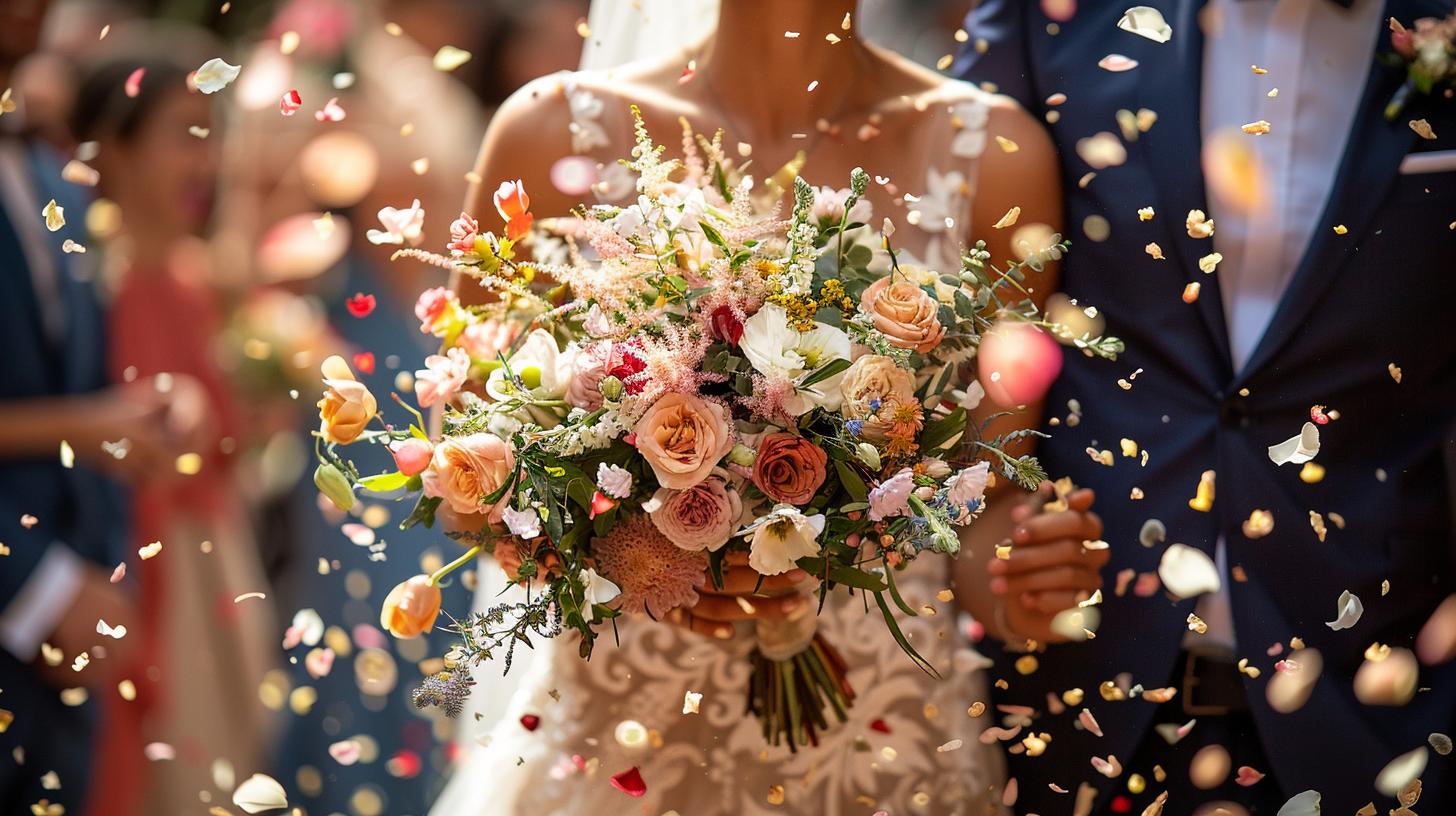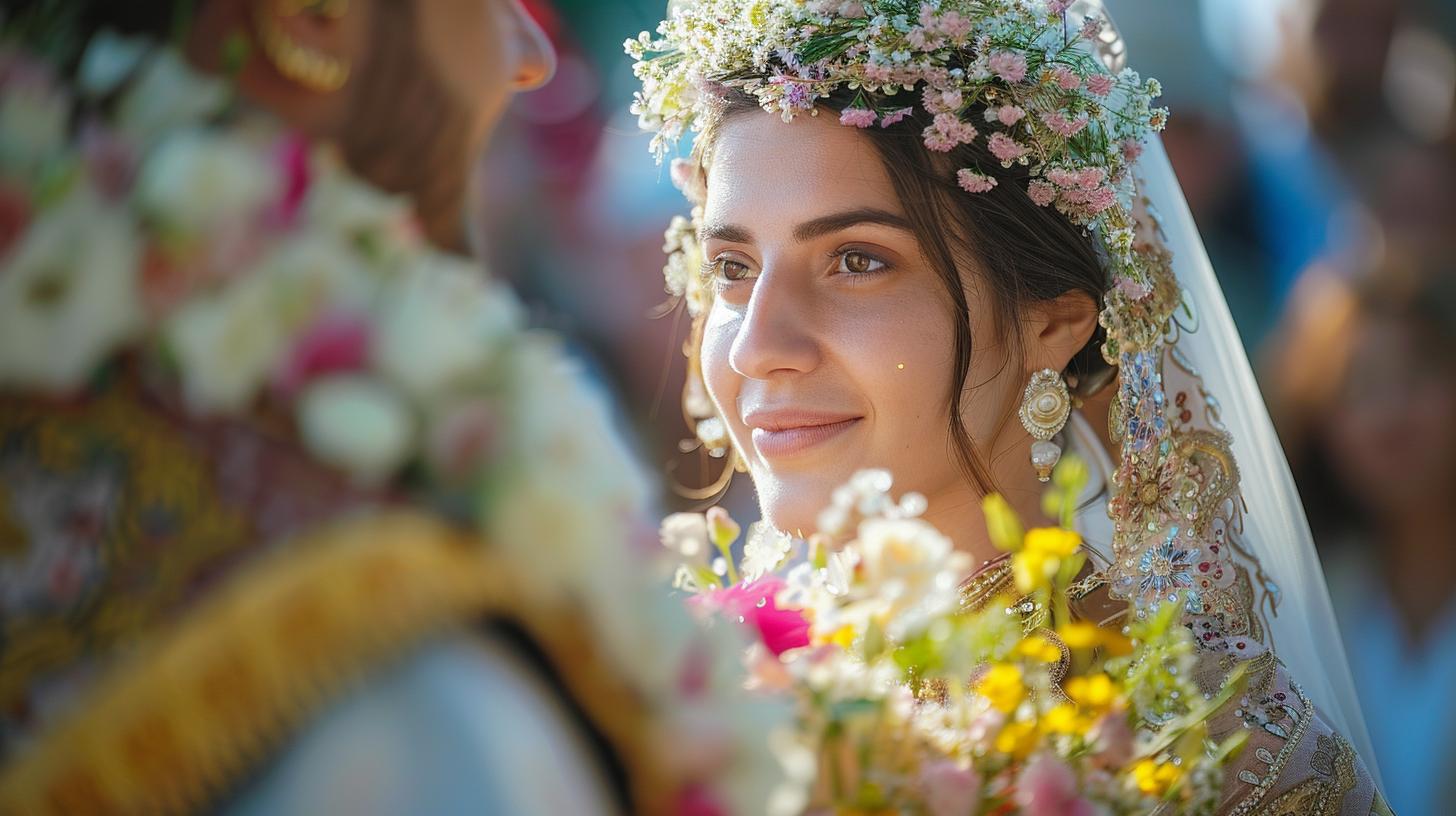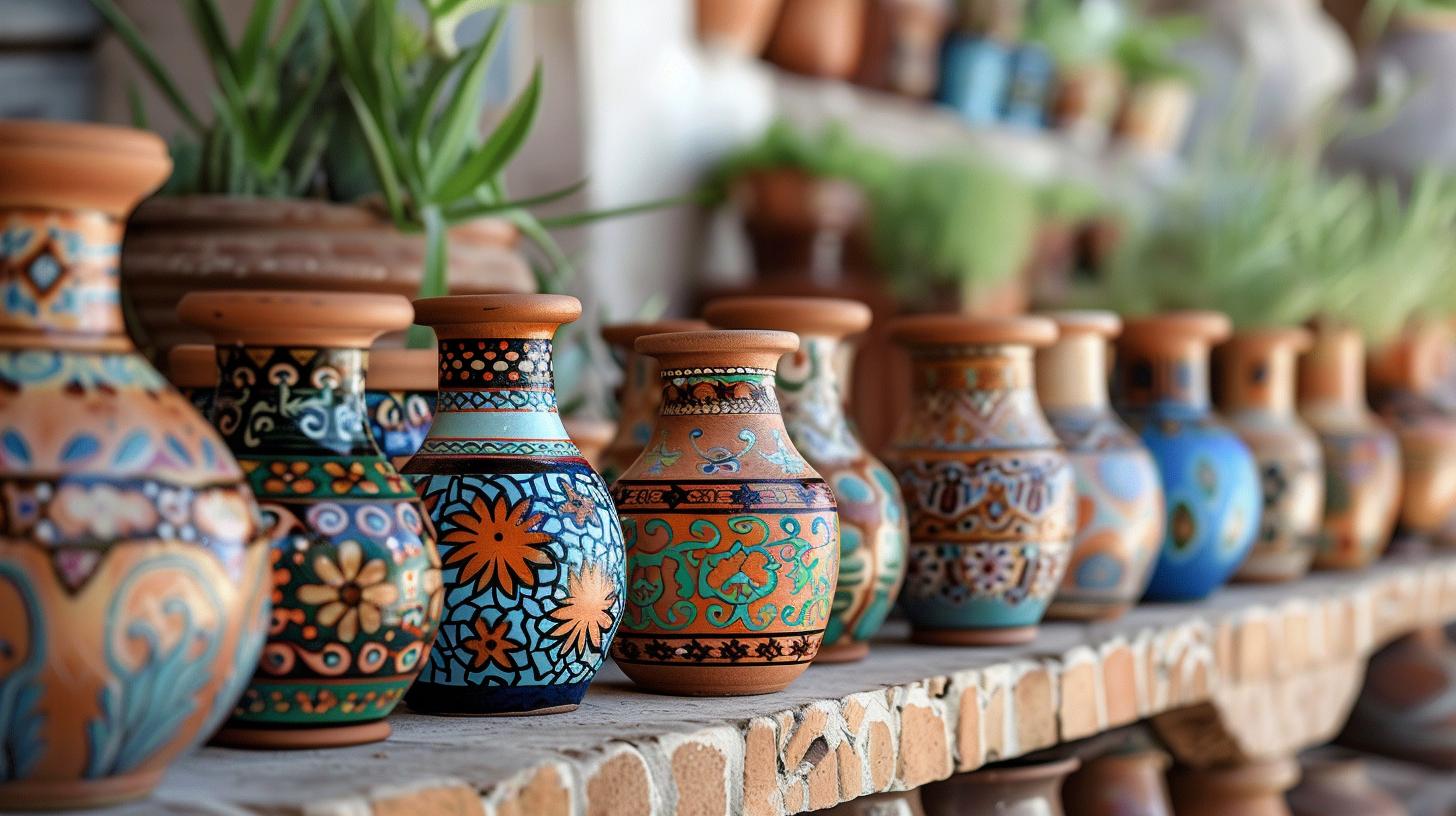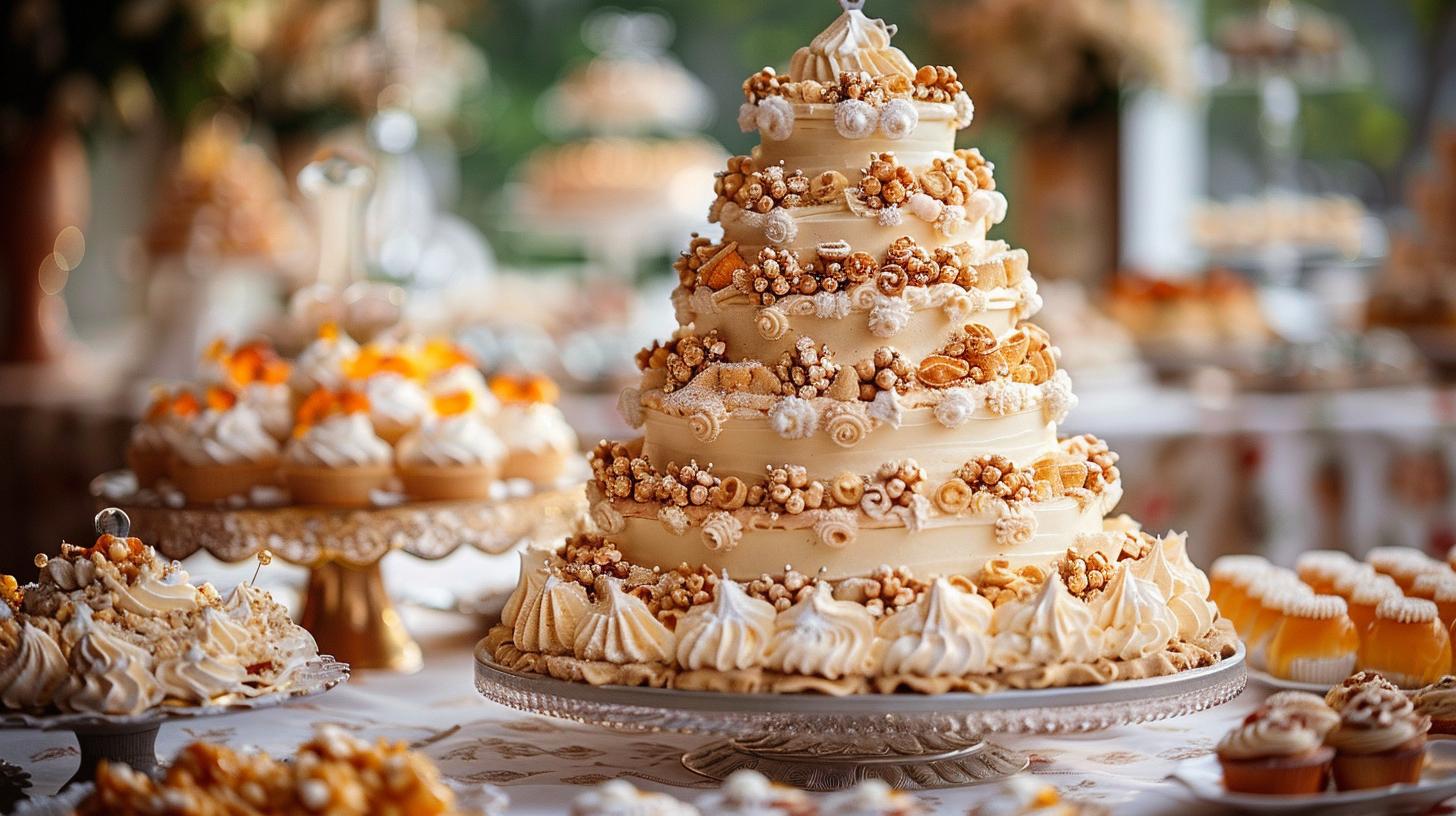Greek Wedding Invitations: Embrace Tradition and Style
Greek wedding invitations play a crucial role in celebrating the union of two individuals. They reflect the rich cultural heritage and traditions of Greek weddings, providing guests with their first glimpse of the upcoming celebration.
These invitations come in various styles, from traditional designs that emphasize cultural significance to modern interpretations that offer a fresh approach. Personalization options also allow couples to incorporate unique elements that tell their love story.
Importance of Greek Wedding Invitations
The significance of Greek wedding invitations transcends their practical purpose. They provide a glimpse into the couple’s values, heritage, and the culture that envelops their union. These invitations are not merely aesthetic creations; they symbolize a blend of history, tradition, and familial connections.
Cultural Significance
In Greek culture, wedding invitations carry deep-rooted meanings that reflect the rich history and customs of the nation. They serve as a bridge connecting the couple’s personal story with their heritage.
The design elements often incorporate traditional symbols and colors that resonate with Greek identity.
- Hello: Certain elements are intrinsic to Greek weddings, such as:
- Greek Key Motif: A classic symbol representing infinity and unity.
- Olive Branches: A symbol of peace and victory, often featured in designs.
- Using National Colors: The iconic blue and white, representing the sky and the sea, are frequently utilized in invitations.
- Historical Connection: These invitations often pay homage to ancient Greek traditions, embodying customs that have been passed down through generations.
The integration of these historical aspects into the invitation design honors not just the couple’s lineage, but also the larger community that has shaped their identities.
Family Unity in Greek Weddings
Family plays a pivotal role in Greek weddings, where the union of two individuals also signifies the merging of two families.
This aspect is prominently reflected in the design and distribution of invitations.
- Involvement of Families: Traditionally, families participate actively in the wedding planning process, which is showcased through the invitations.
The design often includes the names of both families, symbolizing their support and commitment to the union.
- Cultural Expectations: Greek weddings are grand affairs that emphasize togetherness. The invitation not only informs guests about the event but also communicates the importance of familial ties in this celebration.
- Symbols of Unity: Invitations often feature imagery that represents unity, reflecting the belief that marriage is a bond not only between the couple but also between their families.
This can be seen in the use of intertwined patterns or motifs that visually convey this connection.
Greek wedding invitations encapsulate a blend of cultural significance and the essence of family unity.
They tell a story that goes far beyond the details of a wedding date and location. Instead, they serve as an invitation to witness the celebration of love and tradition, deeply rooted in the rich tapestry of Greek culture.
Greek wedding invitations can be categorized into several distinct styles, each reflecting various aspects of tradition, modernity, and personalization. These types enhance the experience of the wedding by setting the tone for the celebration.
Traditional Greek Wedding Invitations
Traditional Greek wedding invitations have a classic and elegant aesthetic, often rooted in cultural customs. They communicate a sense of formality and commitment, which aligns with the ceremonial nature of Greek weddings.
Classic Greek Design Elements
The design of traditional invitations often features elements that draw inspiration from ancient Greece. Common traits include:
- Calligraphy: Beautifully scripted fonts convey a timeless feel.
- Greek Key Motifs: Intricate patterns known as “meander” may adorn the borders.
- Iconic Symbols: Representations of olive branches or laurel wreaths can symbolize peace and victory.
Color Schemes and Motifs
The color palette for traditional invitations often includes shades that are emblematic of Greece:
- White: Symbolizes purity and simplicity.
- Blue: Reflects the colors of the sea and sky, often associated with Greek culture.
- Gold Accents: Adds a touch of luxury, commonly featured in typography or border designs.
Modern Greek Wedding Invitations
Modern Greek wedding invitations embrace contemporary aesthetics while still acknowledging cultural roots.
These designs tend to favor clean lines and innovative formats.
Minimalist Designs
Minimalism in wedding invitations involves stripping away excess decoration to emphasize simplicity. Key features include:
- Sleek Typography: Bold sans-serif fonts that focus on readability.
- Subdued Colors: Neutrals and pastels enhance a refined look.
- Open Space: A clean layout that lets the text stand out.
Modern Materials and Techniques
Advancements in materials used for invitations offer couples creative options.
Common materials include:
- Acrylic: Offers a sleek, contemporary feel with a transparent appearance.
- Textured Papers: Adds tactile elements, such as linen or cotton blends.
- Digital Printing: Allows for intricate designs that might be hard to achieve with traditional methods.
Personalized Greek Wedding Invitations
Personalization has become a significant trend in wedding invitations, allowing couples to inject their individual stories into their invites.
Unique touches can make a lasting impression.
Custom Illustrations and Art
Incorporating custom artwork not only personalizes the invitation but tells the couple’s love story. Examples may include:
- Illustrated Venues: Featuring the church or place significant to the couple.
- Character Drawings: Art that represents the couple’s journey or interests.
- Thematic Elements: Designs reflecting shared hobbies or cultural connections.
Bilingual Text Options
Invitations in both English and Greek cater to diverse guest lists, enhancing accessibility.
This inclusion can involve:
- Side-by-Side Text: Presenting both languages clearly and elegantly.
- Line-by-Line Translation: Ensures comprehension for all guests.
- Language-Specific Design: Adapting styles to maintain cultural aesthetics in both languages.
Greek Wedding Invitation Wording
Choosing the right wording for Greek wedding invitations is a crucial part of the planning process.
Traditional Wording Examples
Traditional Greek wedding invitations often incorporate formal language that emphasizes the significance of the event. The phrasing typically includes the names of the couple, along with the names of their parents, to acknowledge family ties.
- Invitation Example: “Mr. and Mrs. John Smith request the honor of your presence at the marriage of their daughter Maria to Mr. Alex Papadopoulos.”
- Date and Time: “On Saturday, the 20th of May, 2024, at five o’clock in the evening.”
- Venue: “At St. George Greek Orthodox Church, 123 Main St, Anytown, USA.”
This classic format illustrates respect for both the families and the traditions they represent. It sets a formal tone that resonates with many guests.
Modern Wording Examples
Modern Greek wedding invitations allow couples to express their personalities while still honoring their heritage. The language can be more relaxed, infusing a sense of joy and intimacy into the announcement.
- Invitation Example: “Join us for the celebration of love as Maria Smith weds Alex Papadopoulos!”
- Date and Time: “Saturday, May 20, 2024, at 5 PM.”
- Venue: “Held at the beautiful St.
George Greek Orthodox Church.”
Utilizing a less formal approach, modern invitations can feature playful language, making the invitation feel inviting and accessible to all attendees.
Tips for Bilingual Invitations
Bilingual invitations are becoming increasingly popular, especially among Greek-American couples. Including both Greek and English text caters to all guests and embraces cultural roots.
- Formatting: Place the English wording on one side and the Greek translation on the opposite side.
This layout maintains clarity and respect for both languages.
- Examples of Bilingual Text:
- English: “We request the pleasure of your company at our wedding.”
- Greek: “Σας προσκαλούμε να παρευρεθείτε στον γάμο μας.”
- Cultural Acknowledgment: Including a line recognizing both Greek and American customs can create a meaningful connection for the guests.
These practical approaches ensure that all guests feel included and informed, promoting a warm atmosphere that celebrates unity.
The design elements of Greek wedding invitations play a crucial role in capturing the essence of the celebration. From typography to symbolic imagery and material choices, each aspect contributes to the overall aesthetic and cultural significance.
The right combination of these elements can create an invitation that resonates with both tradition and modernity.
Typography Choices
Typography is a fundamental component of any invitation design. In Greek wedding invitations, the choice of font can convey elegance, tradition, or a contemporary flair. Couples often opt for:
- Serif Fonts: Classic serif fonts lend a sense of formality and timelessness, making them popular for traditional designs.
- Script Fonts: Elegant cursive or script fonts can add a personal touch, making the invitation feel intimate and special.
- Sans Serif Fonts: For modern invitations, clean and minimalist sans serif fonts can provide a sleek and sophisticated look.
It is essential to ensure that the chosen typography is legible, especially for important details like names and dates.
Balancing the font styles can enhance the overall design while maintaining readability.
Symbols and Imagery
Greek culture is rich in symbolic imagery, which can be effectively integrated into wedding invitations. Certain symbols evoke meanings that resonate deeply with the couple and their families.
- Greek Key Motif: Known as meander, this design symbolizes eternity and unity.
Incorporating this motif into the invitation design can reinforce the theme of everlasting love.
- Olive Branches: Representing peace and prosperity, images of olive branches are often used to signify well-wishes for the couple’s future.
- Columns and Architectural Elements: Drawing inspiration from classical Greek architecture can evoke a sense of grandeur and tradition.
Imagery can be both visual and textual.
The right symbols can tell a story or highlight a couple’s heritage, making the invitations even more meaningful.
Material Options
The choice of materials is integral to the overall feel of Greek wedding invitations. Different textures and finishes can enhance the invitation experience, with options ranging from traditional to modern.
Acrylic and Clear Materials
Acrylic invitations have gained popularity for their modern appeal. These clear materials provide a unique look that can be both chic and sophisticated. The see-through styling allows for creative layering with floral motifs or geometric patterns.
- Durability: Acrylic is a sturdy option, ensuring that invitations can withstand handling without damage.
- Customization: This material can easily be printed on or etched, providing opportunities for personalization that align with the couple’s style.
Velvet and Textured Papers
Using textured paper, such as velvet or linen, can elevate the elegance of invitations.
Greek Wedding Invitation Templates
Creating the perfect Greek wedding invitation template can streamline the planning process. With an array of styles and designs available, couples can find templates that resonate with their vision while preserving cultural elements.
Finding the Right Template
Choosing the perfect template for Greek wedding invitations begins with considering personal taste and cultural significance. Various sources provide templates that reflect traditional and modern Greek aesthetics.
- Online design platforms often offer ready-to-use templates that can be customized easily.
- Physical stationery stores may have pre-designed options showcasing Greek motifs and color schemes.
- Working with a professional designer can yield unique, one-of-a-kind templates tailored to the couple’s love story.
Customizing Templates
Once a template has been selected, customization options allow couples to imprint their personal style on the invitations.
Customization can take various forms, including:
Color Scheme Adjustments
Incorporating specific colors that embody the wedding theme or personal significance can enhance the visual appeal of the invitations.
Personal Text Inclusion
Couples often prefer to include personal messages, quotes, or their love story, ensuring each invitation holds special meaning.
Graphics and Imagery
Adding illustrations or images that represent significant locations or cultural artifacts can further personalize the design.
Digital vs. Printed Templates
The choice between digital and printed templates plays a crucial role in the overall invitation experience. Here are factors to consider for each option:
Digital Templates
Digital templates allow for immediate access and easy sharing through email or social media. They can be an eco-friendly option, reducing paper waste and providing flexibility in design editing.
Printed Templates
Traditionally, printed invitations are seen as more formal and tangible.
Various printing techniques, including letterpress and foil stamping, can elevate the aesthetic quality of the invitations.
Hybrid Options
Budgeting for Greek Wedding Invitations
Setting a budget for Greek wedding invitations is crucial in the planning process.
It ensures that all desired aspects are accounted for while maintaining financial control. Here are some detailed considerations for managing costs effectively.
Cost Estimation
Estimating the overall cost of wedding invitations involves several factors. Couples should begin by determining the number of guests, as this will impact the total quantity of invitations required. The complexity of the design also plays a significant role in the final price.
Traditional invitations featuring intricate details may be more expensive than minimalist designs.
- Design Complexity: More elaborate designs often require additional time and materials, increasing costs.
- Quantity: Ordering in bulk can lead to cost savings, but it’s essential to anticipate the right number of invitations to avoid waste.
- Materials: The choice of paper, inks, and embellishments can greatly affect pricing.
Premium materials, such as textured or handcrafted paper, typically cost more.
High Quality vs. Affordable Options
Finding the right balance between quality and affordability is essential. High-quality materials and unique designs can enhance the overall aesthetic, but they often come at a higher price point. Couples should assess what elements are non-negotiable for them and which areas can be simplified without compromising their vision.
High-Quality Options
- Custom Designs: Commissioning a designer for a bespoke look can elevate invitations significantly.
- Luxury Materials: Consider using silk, velvet, or embossed paper to create an extraordinary feel.
- Premium Printing Techniques: Options like letterpress or foil stamping provide a distinctive appearance but may increase costs.
Affordable Alternatives
- Pre-Made Templates: Utilizing online templates can be a budget-friendly option while still offering customization.
- Standard Materials: Opting for standard paper stocks and inks can help keep expenses low.
- DIY Options: Crafting invitations by hand or using home printers can substantially reduce costs.
Cost-Saving Tips
Implementing effective strategies can help couples manage their invitation budgets more effectively.
These tips can conserve funds while still achieving a desirable outcome.
- Set a Clear Budget: Determine a specific amount allocated for invitations and stick to it to avoid overspending.
- Limit Invitation Extras: Minimize the use of embellishments like ribbons or complex folds that can inflate costs.
- Compare Vendors: Research and compare different printing services to find the best rates and quality.
- Choose Eco-Friendly Options: Paper made from recycled materials can be both affordable and environmentally friendly.
Being mindful of budgeting helps create invitations that reflect personal style and cultural significance while adhering to financial limitations.
Thoughtful planning leads to a balance between quality and cost, ensuring that couples achieve their dream invitations without exceeding their budget.
Additional Greek Wedding Stationery
Incorporating a variety of stationery into the wedding planning process is essential for creating a cohesive theme. Beyond invitations, couples can enhance their wedding experience with thoughtfully designed stationery that reflects Greek culture.
Save the date cards serve as the first impression of a couple’s upcoming wedding. These cards provide guests with advance notice of the event and are often designed to capture the essence of the couple’s personality and heritage.
When designing save the date cards, elements to consider include:
- Design Elements: Incorporating Greek motifs, such as olive branches or traditional patterns, can add a unique touch. Couples may also choose to include photographs that showcase their relationship.
- Color Schemes: Utilizing colors representative of Greece, like blue and white, or more personalized palettes can make the cards visually appealing.
- Format Choices: Couples can opt for standard cards, magnetized saves the date, or even digital formats to suit their preferences and budget.
Thank You Cards
Thank you cards are an important aspect of post-wedding etiquette.
They allow couples to express gratitude to their guests for attending their celebration and for any gifts received.
Key considerations for thank you cards include:
- Personalization: Adding a personal message or memory from the event can create a heartfelt connection with each recipient.
- Design Consistency: Maintaining the theme and colors from the wedding ensures a cohesive look, reinforcing the overall aesthetic.
- Timing: Sending these cards within a few weeks after the wedding is advisable to show appreciation promptly.
Place Cards and Table Numbers
Place cards and table numbers are vital for organizing seating arrangements and enhancing the dining experience at the reception.
They guide guests to their designated seats while contributing to the decor.
Elements to consider include:
- Design Alignment: Aligning place cards and table numbers with the wedding’s theme—whether traditional or modern—helps maintain a cohesive look throughout the venue.
- Material Choices: Couples may select from various materials like cardstock, acrylic, or even handmade paper to add texture and interest.
- Creative Details: Incorporating personalized elements, such as guest names written in calligraphy or symbolic motifs, can make each place setting feel special.
Common Challenges and Solutions
Planning Greek weddings can present various challenges, particularly when it comes to the invitations.
Understanding these common issues and exploring suitable solutions can significantly ease the process for couples.
Language Barriers
Language differences can complicate the invitation process, especially for couples who wish to incorporate Greek elements into their invitations. Family members and guests may have varying degrees of fluency in Greek and English, requiring thoughtful wording choices.
Translating Content
Ensuring that all invitees understand the invitation is crucial. Couples often opt for bilingual text, featuring both Greek and English translations. This practice makes the invitations accessible while honoring the cultural heritage.
Clear Communication
Including an explanation of any Greek traditions or phrases may enhance the overall understanding and appreciation. Short descriptions can be added as footnotes or on a separate insert, providing context for guests unfamiliar with Greek customs.
Seeking Help from Experts
Engaging professional designers familiar with bilingual invitations can be beneficial. They can help craft clear and culturally appropriate wording, bridging any language gaps and ensuring that the essence of the wedding is preserved.
Balancing Tradition and Modernity
Finding the right balance between traditional and contemporary design elements is a common challenge. Couples want to honor their heritage while also making their invitations feel modern and personal.
Understanding Traditional Elements
It is essential to be familiar with traditional design aspects, such as color schemes, motifs, and typography.
Classic elements, like the Greek key pattern and colors representative of Greece, can be incorporated to maintain cultural significance.
Incorporating Modern Designs
Modern designs can be infused with traditional patterns and colors. Implementing minimalistic styles, fresh typography, or unique materials can create an inviting and elegant look while still respecting Greek traditions.
Personalization
To achieve a perfect blend of tradition and modernity, couples can personalize their invitations with unique artwork or illustrations that reflect their love story, making their invitation stand out.
Drawing inspiration from their own experiences can add a personal touch to the overall design.
Popular Trends in Greek Wedding Invitations
As couples embrace the fusion of tradition and innovation, new trends are shaping the landscape of Greek wedding invitations. These modern designs reflect individual personalities and showcase cultural heritage in creative ways.
Luxury Invitations
Luxury invitations have become increasingly popular, allowing couples to make a grand statement right from the start. These invitations are characterized by their high-quality materials and exquisite detailing. Key aspects include:
- High-Quality Paper: Couples often choose heavy cardstock or handmade paper to convey sophistication.
- Foil Stamping: Gold or silver foil accents can enhance the elegance, adding a luxurious touch to the overall design.
- Embossing: Raised lettering creates a tactile experience, making each invitation feel special to the touch.
- Custom Envelopes: Matching or coordinating envelopes add to the luxurious feel, often sealed with a wax seal.
Handmade and Unique Designs
Handmade invitations reflect a personal touch that resonates with many couples.
This trend allows for creativity and individuality, setting a wedding apart from others. Characteristics include:
- Artisan Techniques: Techniques such as letterpress or screen printing provide a unique aesthetic that machine-made invitations cannot replicate.
- Natural Elements: Incorporating dried flowers, twine, or even wood materials connects the invitation to nature, adding a layer of warmth.
- Illustrative Styles: Custom illustrations, whether depicting the couple or the venue, create a narrative that invites guests into their story.
- Eclectic Color Palettes: Pairing unexpected colors can reflect personal tastes, often moving away from traditional hues.
Incorporating Wax Seals and Lace
Combining traditional elements with modern design, wax seals and lace have made a notable comeback.
These features bring a sense of nostalgia and romance to wedding invitations. Key points include:
- Wax Seals: Adding a wax seal not only enhances aesthetics but also provides a sense of security and exclusivity, almost as if the invitation holds a secret.
- Lace Accents: Delicate lace can be used as an overlay or a border, evoking a vintage feel that complements the formal aspects of a wedding.
- Combination Materials: Using a mix of materials like paper and fabric offers visual depth and texture, making each invitation distinct.
Resources for Greek Wedding Invitations
Planning Greek wedding invitations involves careful consideration of aesthetics and personal touches.
Various resources are available to simplify the design process and ensure a memorable final product.
Online Design Platforms
Online design platforms offer couples a convenient way to create and customize their wedding invitations from the comfort of their own homes. These tools come equipped with templates, graphics, and innovative features to help streamline the design process.
- Templates: Many platforms provide a variety of templates specifically tailored for Greek wedding themes, allowing couples to select designs that resonate with their cultural heritage.
- Customization Options: Users can often alter colors, fonts, and layouts to fit personal preferences, incorporating unique elements that reflect their love story.
- User-Friendly Interfaces: With intuitive design tools, even those without graphic design experience can create beautiful invitations.
Professional Designers
Hiring a professional designer can elevate the quality and uniqueness of wedding invitations.
Experienced designers possess a deep understanding of Greek cultural elements and know how to integrate them into their work seamlessly.
- Personal Consultation: Professional designers often provide personal consultations to discuss vision, themes, and specific requests, ensuring the final product matches the couple’s expectations.
- Portfolio Review: Couples can review designers’ portfolios to find a style that resonates with them, helping to select someone who aligns with their vision.
- Quality Assurance: Professionals have access to high-quality materials and printing methods, which can enhance the overall look and feel of the invitations.
Customer Reviews and Opinions
Reading customer reviews can provide valuable insight into the quality and service of various providers.
Couples often share their experiences regarding both online platforms and professional designers.
- Feedback on Design Quality: Reviews frequently highlight the quality of the finished product, giving prospective clients a clear idea of what to expect.
- Timeliness of Delivery: Many reviews also address the timeliness of service, which is crucial for ensuring invitations are sent on schedule.
- Customer Service: Positive or negative experiences with customer service can also impact decision-making, as responsive and helpful providers often lead to more satisfying results.
.

